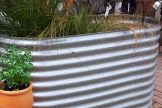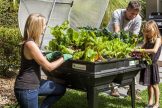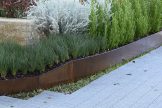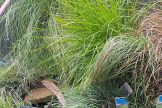
Often when it comes to garden tools people think the cheaper the better. Like anything, you get what you pay for and you should always buy the best you can afford. Why? Well, there are a number of reasons, the first being that cheap garden tools simply don’t last long, be they secateurs, shovels, shears, picks or loppers. Cheap, nasty cutting tools don’t last, blunt quickly, are difficult to sharpen, rarely cut cleanly (thereby damaging plant tissue), and are more likely to injure you as you use excessive force to accomplish the job.
The environmental impact of continually replacing cheap garden tools is astounding. Consider the use of resources that goes into the manufacture of most of the cheap, imported garden tools on the market, not too mention the (often) excessive packaging and transport costs. Embedded water, carbon emissions and the significant contribution these broken tools make to landfill are reason enough to buy the best. So, while the initial outlay for some of these top of the range garden products can be a little daunting, consider the savings you will make in the long run. Good quality tools will last for years, provided they are cared for.
How to choose a quality tool
Secateurs: Top quality secateurs (e.g. Felco) cut better, are easier to sharpen, are more comfortable to use and easier to maintain. Look for handles with rubber shock absorbers and cushions to protect your wrist, a toothed centre-nut for aligning the cutting and anvil blades easily and precisely for a clean, accurate cut. Remember to try the product out before you buy and make sure it is the right size for your hands. Left handed gardeners should always choose left handed secateurs (e.g. Felco 9 and Felco 10).
Top quality garden tools such as shovels, forks, mattocks and picks should almost last a lifetime (Spear and Jackson offer a 10 year guarantee on their digging tools) and are designed to reduce discomfort to the user. They can make the difference between a gardener that works daily in the garden and one that cannot get out of bed in the morning.
Forks: Forks are fantastic for turning and breaking up clumps of soil, and aerating compost. Look for a fork with the tines drawn from a single piece of carbon steel and the shafts are made from hardwood. D-shaped handles are generally regarded as the most comfortable.
Shovels: Shovels have a scooped blade (as opposed to the flat blade on a spade), which makes it suitable for moving garden material such as sand and dirt. Select the proper handle length for a garden shovel, with the length of shovel handle depending on the height of the user. A standard shovel handle length is 28 to 29 inches long and made of wood or metal, with wood being the preferred option due to weight and durability. Opt for the garden shovel with a D-type hilt or handle instead of a Y-type hilt that could split if used for heavy loads.
Spades: Spades have a flat blade and are used for digging, cutting edges and dividing plants. The critical thing with spades is to keep them sharp (bevel the back edge off using a bench grinder or sharpening stone). Buy a stainless steel bladed shovel or spade for a lighter weight, non-rusting option, although a carbon steel blade is still the best all-around blade.
Loppers, Choppers and all things garden: For all the other garden tools around it is vital you select the right tool for the job, and buy the best you can afford. Wolf-Garten, a German company, manufactures a great range of top quality garden tools with interchangeable handles, effectively increasing the versatility and usability of each tool. While the initial outlay may be high, the environmental and dollar savings are significant in the long run.
Look after your tools
If you buy the best quality tools you can afford and look after them, they will perform well for years. Don’t leave them out in the rain! Look after timber handles with regular oiling (50% mineral turpentine and 50% raw linseed oil is best). Clean blades carefully and sharpen where necessary, and sand down rough splinters on wooden handles. To keep blades and the edges of spades and shovels sharp, use a bench grinder or a sharpening stone. Squirt some oil on saw blades and anything else that might rust, then rub the oil in with an old cloth. Oiling tool handles and blades is a great job for a rainy day.
Using a diamond sharpening stone on secateurs is one of the best things you can do, and will reduce user effort and damage to plant tissue by keeping blades sharp. Clean and sharpen secateurs and loppers, and be sure to check blades carefully for rust, particularly if you’ve discovered the secateurs under a pot or abandoned in a garden bed! Careful use of steel wool and oil should restore good quality cutting blades.
First class garden tools are both an excellent investment and an absolute pleasure to use by comparison with cheaper products. They are better for the environment, our garden, our health… and your wallet!





